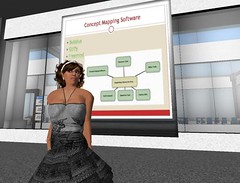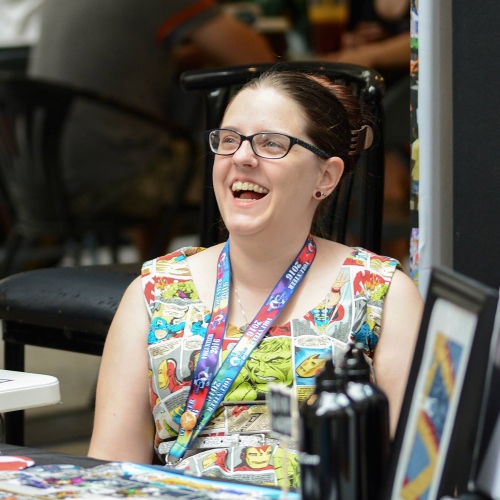Third annual Georgia Tech Legislative Roundtable best one yet
 In 2006, the Office of Policy Analysis and Research (OPAR), a small department within the Georgia Tech Research Institute (GTRI), piloted a conference that brought together researchers, businesspeople and legislators to discuss a handful of issues in the domain of science and technology that was of interest and consequence to the state of Georgia. I was among the small group of interns in OPAR that helped launch this event. The format has essentially remained the same: five or six state legislators, typically associated with Assembly leadership or S&T committees, sit on a panel moderated by a notable research professional from within the Georgia Tech community. OPAR sets the agenda via a handful of policy briefs that provide the framework for the topics discussed by the panel.
In 2006, the Office of Policy Analysis and Research (OPAR), a small department within the Georgia Tech Research Institute (GTRI), piloted a conference that brought together researchers, businesspeople and legislators to discuss a handful of issues in the domain of science and technology that was of interest and consequence to the state of Georgia. I was among the small group of interns in OPAR that helped launch this event. The format has essentially remained the same: five or six state legislators, typically associated with Assembly leadership or S&T committees, sit on a panel moderated by a notable research professional from within the Georgia Tech community. OPAR sets the agenda via a handful of policy briefs that provide the framework for the topics discussed by the panel.
Each year, the event has been fine-tuned; repeat panel members seem to have become more comfortable with the format, as have repeat attendees, resulting in a much more interactive (and much more interesting) experience. New to the mini-conference this year, a number of companies with products, services and ideas within the areas of discussion were invited to set up exhibits. The combination of these elements resulted in what I think is the best roundtable event that OPAR has done yet.
This year’s panel was moderated by Dr. Mark Allen, Senior Vice Provost for Research and Innovation at Georgia Tech. The panelists, all members of the Georgia General Assembly, included Sen. Cecil Staton, chairman of the Senate Science & Technology committee; Rep. Amos Amerson, chairman of the House Science & Technology committee (a committee I used to work for, might I add); Rep. Hardie Davis; Rep. Kevin Levitas and Rep. Jimmy Pruett. This year’s discussion topics included the use of virtual worlds (like Second Life) in education, particularly as how it relates to increasing and maintaining interest in science, technology, engineering and mathematics (STEM); state-level legislative analyses of community wireless, innovation and biotechnology; and renewable energy portfolio standards. Many of the topics flowed well into others, which helped the discussion move naturally. Dr. Allen did an excellent job in facilitating this and keeping all of the panelists as well as members of the audience involved in the discussion.
Virtual communities and internet infrastructure

Virtual class in session at the Ohio Learning Network in Second Life. Virtual classrooms were among the topics discussed at the roundtable. (Image courtesy Fleep Tuque via Flickr)
With regard to the specific topics, I have to admit that I must be getting old, because this is the first time one of these technology-policy things was a relatively new concept to me. While I’m familiar with virtual worlds like Second Life (I used some very early virtual worlds that were neither successful nor particularly engaging or useful because of limitations in technology at the time), it never occurred to me that using them for educational purposes, sometimes holding entire courses virtually on a completely virtual campus, was something that was becoming a common thing. But now that it’s been brought to my attention, it makes a lot of sense. Some studies have apparently shown that education in virtual worlds increases engagement among students who have trouble in traditional classrooms. Additionally, Chmn. Amerson discussed the usefulness of virtual classrooms to homeschoolers. The discussion about the use of virtual communities for education flowed seamlessly into a discussion about internet infrastructure, particularly as it relates to broadband access and community wireless. Most of the panelists seemed to agree that improving broadband infrastructure is vital; community wireless may be the most cost-effective way to get around the “last mile” problem; and the most efficient way to achieve all of this may be through public-private partnerships, such as one that Rep. Pruett mentioned briefly that is being constructed in five south Georgia counties.
Innovation, infrastructure and biofuel
The discussion on innovation branched from the economic discussion relating to broadband infrastructure. Since innovation really can mean just about anything and involve just about every sort of technology, this helped broaden the discussion again to make way for discussions on biotechnology and alternative energy. The keyword that seemed to tie all of these discussions together was infrastructure. A proper legal infrastructure invites business, and by extension, innovation. A proper communications infrastructure can bring broadband internet to small, rural communities as well as old, urban neighborhoods. A proper energy infrastructure can make fuel and electricity clean, cheap and essentially unlimited. On the topic of energy, Chmn. Amerson had some very interesting, very informed, very salient remarks. He mentioned an article that he wrote a few years ago (which I am trying to track down) in which he discussed the problems with using corn as the sole or primary basis for ethanol production. He predicted, correctly, that the extensive use of corn in ethanol production in order to meet greater requirements for ethanol content in gasoline would result in increases in food prices. In his remarks today, Amerson mentioned the use of pine trees for ethanol production and predicted that the same thing may eventually happen to the price of pine-based products, such as paper and lumber. His reasoning was, even though ethanol producers are currently only using “trash pines,” trees and parts of trees that aren’t suitable for lumber or paper, it’s not a stretch to imagine that eventually ethanol producers will start taking away from the lumber and paper pines, increasing their price.
On the whole, Amerson seems to have a healthy skepticism about how far biofuels can take us on our journey to energy independence. It is part of a solution, is what he seems to imply, but it is not and cannot become the be-all and end-all of how we go about establishing a sustainable energy future. One source of biofuel that doesn’t have much of an established commercial purpose, though, is the ubiquitous kudzu. It’s not something that has been explored greatly from an economic policy standpoint as of yet, but I’ve been led to believe that this fast-growing, fibrous vine is perhaps one of the most promising sources of biofuel, both because it is not a widely commercial crop (like corn and pine) and because of its relatively high efficiency ratio (the amount of energy that you get out of the biofuel is greated than or equal to the amount of energy required to produce it). It’s certainly something to take under consideration, as it helps to diversify the sources of ethanol further, relieving the demand for any one source, keeping prices for multi-use sources such as corn relatively stable.
Nuclear: A renewable resource?
Amerson does see great promise in nuclear power as a means toward energy independence. Having done some research on the subject myself (granted, it was more than 10 years ago and it was more of a breadth-based study), I’m inclined to agree that nuclear is the way to go to get a large source of clean, cheap and renewable (yes, renewable!) energy for electricity, now. The full argument for this is an entry for another day, but the answer to just about every concern running through your head right now is, again, infrastructure. Infrastructure to handle safety and monitoring, infrastructure to handle waste and reprocessing, infrastructure to handle security…and so on. Amerson’s big point about nuclear is one that I’ve been aware of, but had never considered in this light: nuclear is renewable.
His argument essentially hinges on waste reprocessing and using the most commonly-occuring Uranium isotope, U-238 (depleted uranium), to “breed” plutonium to fuel reactors. In general, the greatest concern with nuclear waste reprocessing is security–the plutonium that fuels reactors is also the plutonium that “fuels” nuclear weapons. Again, this is an issue that is a post, if not a thesis paper, unto its own, so I won’t delve too deeply, but it is worth mentioning that nuclear “waste” can practically be reprocessed an unlimited number of times, which is why it can be said that nuclear energy is renewable. This comes at a certain expense, but so does storing the waste. I would imagine that with improvements on the reprocessing technology (see: innovation), it would, after a certain point in time, become more cost-effective to reprocess rather than store nuclear waste. Just some food for thought.
Nanotechnology, distributed computing and how I suck at schmoozing
In addition to the topics specifically on the agenda, the discussion turned to nanotechnology on several occasions, particularly as it relates to innovation in just about every engineering discipline. Before the conference began, I found myself talking to Dr. James Meindl, director of the Microelectronics Research Center and the Nanotechnology Research Center at Georgia Tech. Of course, I was just making conversation; I didn’t really realize who he was until the introduced him at the beginning of the conference. I just like talking to smart people. 🙂 I’m also incredibly bad at talking to smart people. I mean, I do just fine conversing with them (I like to think that I’m generally a “smart person”), but I’ve never been able to figure out the fine art that is schmoozing. When you’re at an event like this, that is supposedly intended to be a networking event, among many other things, what is the protocol for joining conversations in process, starting a conversation with someone about something they mentioned earlier, or for that matter, starting a conversation with someone more important than you, whom you don’t know, and when you’re there with no title representing no one but yourself? Input would be appreciated.
But I digress. Dr. Meindl is a pretty interesting guy, and as far as I can tell, a pretty nice guy, too. While nanotechnology was something that we discussed at the first roundtable in 2006, its growth and ubiquity, not to mention the fact that Georgia Tech is about to open a HUGE nanotech research facility–Dr. Meindl said something about businesses using the resource to gain an “unfair advantage” against businesses without a comparable resource, though I disagree with the characterization of that advantage as “unfair,” as there’s nothing unfair about using the resources at your disposal when it comes to free market enterprise (though if he was just using the characterization as a literary device, then I totally see his point)–the topic may warrant some revisiting next year.
A topic that may warrant a visit for the first time is that of distributed computing. Rep. Levitas mentioned in passing the Folding@home project, though he didn’t mention it by name. He said that while he didn’t really understand it, he found it really interesting and amazing. Since distributed computing has provided and continues to provide solutions for a wide variety of tasks, from cryptanalysis to medicine to art, it may be of particular interest to a number of people in business and government.
Whatever is examined in upcoming years, however, I feel that OPAR will only continue to refine and hone the relevance and thoroughness of the topics it researches and presents.

